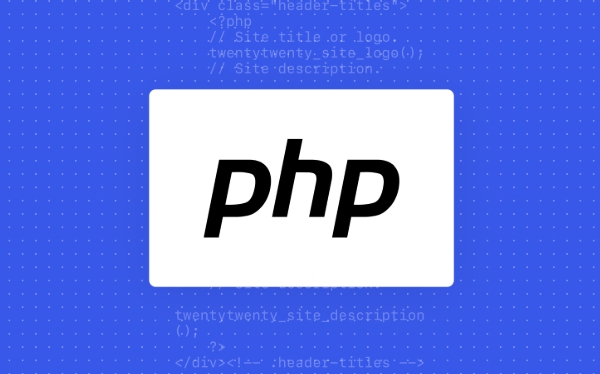The key steps to install PHP on Windows include: 1. Download the appropriate PHP version and decompress it. It is recommended to use the Thread Safe version with Apache or Non Thread Safe version with Nginx; 2. Configure the php.ini file and rename php.ini-development or php.ini-production to php.ini; 3. Add the PHP path to the system environment variable Path for command line use; 4. Test whether PHP is installed successfully, execute php -v through the command line and run the built-in server to test the parsing capabilities; 5. If you use Apache, you need to configure the PHP module and PHPIniDir in httpd.conf, and ensure that the module version matches, the path is correct and takes effect after restarting Apache. Common problems are mostly caused by path errors, module mismatch or service failure, and can be solved by checking the log.

Installing PHP is actually not difficult on Windows, you can basically do it by following the steps. The key is to select the right version, configure the environment variables, and ensure that they can cooperate with the web server you use (such as Apache or Nginx).

Download the appropriate PHP version
First, go to the PHP official website to download the Windows version of ZIP package. It is recommended to select the "Thread Safe" version. If you are using it with Apache, if you are running in FastCGI mode (for example, with Nginx), then select "Non Thread Safe".
- It is recommended to decompress to a fixed path, such as
C:\php, so that the configuration is convenient afterwards. - After decompression, remember to rename
php.ini-developmentorphp.ini-productiontophp.ini, this is the main configuration file
Configure environment variables
In order to enable the command line to use the php command directly, you need to add the PHP path to the system environment variable:

- Open System Properties -> Advanced System Settings -> Environment Variables
- Find
Pathin "System Variables" and click Edit - Add a new record, the content is your PHP directory, such as
C:\php
This way you can open the command line anywhere to execute PHP scripts.
Test whether PHP is installed successfully
You can test it with the command line first:

php -v
If you see an output like this, the instructions are already installed:
PHP 8.2.12 (cli) (built: Jul 18 2023 16:59:47) (ZTS Visual C 2019 x64) Copyright (c) The PHP Group Zend Engine v4.2.12, Copyright (c) Zend Technologies
You can also write a simple PHP file to see if it can be parsed:
<?php phpinfo(); ?>
Save it as info.php and start the built-in server with the command:
php -S localhost:8000
Open the browser and visit http://localhost:8000/info.php , and you can see the PHP detailed information page, which means there is no problem.
If you are using Apache
Then you also need to configure Apache to handle PHP requests. Mainly add the following lines to Apache's httpd.conf file (the specific path is modified according to your own situation):
LoadModule php_module "c:/php/php8apache2_4.dll" AddHandler application/x-httpd-php .php PHPIniDir "C:\php"
Notice:
- Make sure Apache's module path is correct
- The Apache module names corresponding to different PHP versions may be different. You need to confirm whether they match.
- Apache can only take effect after restarting
Basically all this is it, and it’s not a big problem to follow the steps. However, the prone to errors is usually the path not written correctly, the module version does not match, or the service is forgotten to restart. When encountering problems, you can read more logs, especially Apache's error.log and PHP error prompts.
The above is the detailed content of How to Install PHP on Windows. For more information, please follow other related articles on the PHP Chinese website!

Hot AI Tools

Undress AI Tool
Undress images for free

Undresser.AI Undress
AI-powered app for creating realistic nude photos

AI Clothes Remover
Online AI tool for removing clothes from photos.

Clothoff.io
AI clothes remover

Video Face Swap
Swap faces in any video effortlessly with our completely free AI face swap tool!

Hot Article

Hot Tools

Notepad++7.3.1
Easy-to-use and free code editor

SublimeText3 Chinese version
Chinese version, very easy to use

Zend Studio 13.0.1
Powerful PHP integrated development environment

Dreamweaver CS6
Visual web development tools

SublimeText3 Mac version
God-level code editing software (SublimeText3)

Hot Topics
 How to get the current session ID in PHP?
Jul 13, 2025 am 03:02 AM
How to get the current session ID in PHP?
Jul 13, 2025 am 03:02 AM
The method to get the current session ID in PHP is to use the session_id() function, but you must call session_start() to successfully obtain it. 1. Call session_start() to start the session; 2. Use session_id() to read the session ID and output a string similar to abc123def456ghi789; 3. If the return is empty, check whether session_start() is missing, whether the user accesses for the first time, or whether the session is destroyed; 4. The session ID can be used for logging, security verification and cross-request communication, but security needs to be paid attention to. Make sure that the session is correctly enabled and the ID can be obtained successfully.
 PHP get substring from a string
Jul 13, 2025 am 02:59 AM
PHP get substring from a string
Jul 13, 2025 am 02:59 AM
To extract substrings from PHP strings, you can use the substr() function, which is syntax substr(string$string,int$start,?int$length=null), and if the length is not specified, it will be intercepted to the end; when processing multi-byte characters such as Chinese, you should use the mb_substr() function to avoid garbled code; if you need to intercept the string according to a specific separator, you can use exploit() or combine strpos() and substr() to implement it, such as extracting file name extensions or domain names.
 How to split a string into an array in PHP
Jul 13, 2025 am 02:59 AM
How to split a string into an array in PHP
Jul 13, 2025 am 02:59 AM
In PHP, the most common method is to split the string into an array using the exploit() function. This function divides the string into multiple parts through the specified delimiter and returns an array. The syntax is exploit(separator, string, limit), where separator is the separator, string is the original string, and limit is an optional parameter to control the maximum number of segments. For example $str="apple,banana,orange";$arr=explode(",",$str); The result is ["apple","bana
 Using std::chrono in C
Jul 15, 2025 am 01:30 AM
Using std::chrono in C
Jul 15, 2025 am 01:30 AM
std::chrono is used in C to process time, including obtaining the current time, measuring execution time, operation time point and duration, and formatting analysis time. 1. Use std::chrono::system_clock::now() to obtain the current time, which can be converted into a readable string, but the system clock may not be monotonous; 2. Use std::chrono::steady_clock to measure the execution time to ensure monotony, and convert it into milliseconds, seconds and other units through duration_cast; 3. Time point (time_point) and duration (duration) can be interoperable, but attention should be paid to unit compatibility and clock epoch (epoch)
 How does PHP handle Environment Variables?
Jul 14, 2025 am 03:01 AM
How does PHP handle Environment Variables?
Jul 14, 2025 am 03:01 AM
ToaccessenvironmentvariablesinPHP,usegetenv()orthe$_ENVsuperglobal.1.getenv('VAR_NAME')retrievesaspecificvariable.2.$_ENV['VAR_NAME']accessesvariablesifvariables_orderinphp.iniincludes"E".SetvariablesviaCLIwithVAR=valuephpscript.php,inApach
 Why We Comment: A PHP Guide
Jul 15, 2025 am 02:48 AM
Why We Comment: A PHP Guide
Jul 15, 2025 am 02:48 AM
PHPhasthreecommentstyles://,#forsingle-lineand/.../formulti-line.Usecommentstoexplainwhycodeexists,notwhatitdoes.MarkTODO/FIXMEitemsanddisablecodetemporarilyduringdebugging.Avoidover-commentingsimplelogic.Writeconcise,grammaticallycorrectcommentsandu
 PHP prepared statement with IN clause
Jul 14, 2025 am 02:56 AM
PHP prepared statement with IN clause
Jul 14, 2025 am 02:56 AM
When using PHP preprocessing statements to execute queries with IN clauses, 1. Dynamically generate placeholders according to the length of the array; 2. When using PDO, you can directly pass in the array, and use array_values to ensure continuous indexes; 3. When using mysqli, you need to construct type strings and bind parameters, pay attention to the way of expanding the array and version compatibility; 4. Avoid splicing SQL, processing empty arrays, and ensuring data types match. The specific method is: first use implode and array_fill to generate placeholders, and then bind parameters according to the extended characteristics to safely execute IN queries.
 how to avoid undefined index error in PHP
Jul 14, 2025 am 02:51 AM
how to avoid undefined index error in PHP
Jul 14, 2025 am 02:51 AM
There are three key ways to avoid the "undefinedindex" error: First, use isset() to check whether the array key exists and ensure that the value is not null, which is suitable for most common scenarios; second, use array_key_exists() to only determine whether the key exists, which is suitable for situations where the key does not exist and the value is null; finally, use the empty merge operator?? (PHP7) to concisely set the default value, which is recommended for modern PHP projects, and pay attention to the spelling of form field names, use extract() carefully, and check the array is not empty before traversing to further avoid risks.






